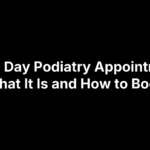Your feet hurt. Maybe it started with a dull ache after standing all day at work. Or perhaps sharp pain shoots through your heel when you take your first steps each morning. Whatever the cause, foot pain has a way of taking over your life. It affects how you move, what shoes you can wear, and even your mood. You want relief, but you’re not ready to jump straight to medications or invasive treatments.
Good news: you have options. Natural remedies can provide real relief for many types of foot pain. We’ve compiled nine podiatrist-backed approaches that you can start using right away. These methods range from simple rest and elevation techniques to targeted stretches and strengthening exercises. You’ll learn how to use heat and cold therapy effectively, when massage helps, and which footwear changes make the biggest difference. We’ll also cover natural topicals and supplements that show promise. Most importantly, you’ll understand which remedies work best for your specific symptoms and when it’s time to seek professional care. Let’s get you back on your feet comfortably.
1. Get a podiatry exam at Achilles Foot and Ankle Center
Starting your search for natural remedies for foot pain with a professional diagnosis makes everything else more effective. You might think visiting a podiatrist contradicts the natural approach, but understanding what’s actually causing your pain lets you choose targeted remedies that work. At Achilles Foot and Ankle Center, our team combines diagnostic expertise with conservative treatment options to help you find relief without jumping straight to invasive procedures.
What this remedy is
A comprehensive podiatry exam identifies the root cause of your foot pain and creates a foundation for your recovery plan. During your visit, a podiatrist examines your foot structure, assesses your gait, reviews your medical history, and may use diagnostic imaging to see what’s happening beneath the surface. This exam reveals whether you’re dealing with plantar fasciitis, nerve compression, arthritis, or another condition, which completely changes which natural remedies will help you most.
Step by step instructions
Call Achilles Foot and Ankle Center to schedule your appointment at one of our thirteen Central Virginia locations. Bring a list of your symptoms, including when the pain started, what makes it worse, and any remedies you’ve already tried. Wear or bring the shoes you typically use throughout your day. Your podiatrist will perform a thorough examination and discuss conservative treatment options that align with your preference for natural approaches.
Who this works best for
You’ll benefit most from this exam if you’ve had persistent foot pain lasting more than two weeks, if your symptoms are getting worse, or if you’re unsure what’s causing your discomfort. This step particularly helps people with diabetes, those experiencing numbness or tingling, and anyone whose pain limits daily activities.
Getting the right diagnosis first saves you time and frustration trying remedies that don’t match your specific condition.
Safety tips and when to see a podiatrist
Schedule your exam immediately if you have severe pain, visible deformity, signs of infection like redness and warmth, or inability to bear weight. People with diabetes should see a podiatrist at the first sign of any foot problem, as early intervention prevents serious complications. Don’t wait for your condition to worsen before seeking professional guidance.
2. Rest, elevate, and protect your feet
The simplest natural remedies for foot pain start with giving your feet a break from the activities that strain them. Your body needs downtime to heal, and foot pain often signals that you’ve pushed too hard without allowing adequate recovery. Rest doesn’t mean complete inactivity, but it does mean reducing or modifying activities that trigger your symptoms until the pain subsides.
What this remedy is
Rest, elevation, and protection form the foundation of conservative foot care that podiatrists recommend as a first line of defense. This approach reduces inflammation and swelling by limiting blood flow to the affected area when you elevate your feet and by preventing further damage when you rest. Protection involves using supportive footwear or temporary bracing to stabilize your foot while it heals.
Step by step instructions
Stop or significantly reduce activities that cause pain for at least 48 to 72 hours. Sit or lie down and elevate your feet above heart level for 15 to 20 minutes several times throughout the day. Use pillows or a cushion to prop your feet comfortably. Wear shoes with proper support even at home, avoiding walking barefoot on hard surfaces. Consider using a walking boot or brace if your podiatrist recommends one.
Who this works best for
This remedy works well for anyone experiencing acute foot pain from overuse, minor injuries, or inflammatory conditions like plantar fasciitis. You’ll see the best results if you catch the problem early, before chronic damage sets in.
Rest and elevation provide the conditions your body needs to start its natural healing process without additional interventions.
Safety tips and when to see a podiatrist
Watch for signs that rest alone isn’t enough, including worsening pain, increased swelling, or symptoms lasting beyond a week. Contact Achilles Foot and Ankle Center if you develop numbness, tingling, or if your pain prevents you from performing essential daily activities.
3. Try warm Epsom salt foot soaks
One of the most accessible natural remedies for foot pain sits in your bathroom cabinet right now. Warm Epsom salt soaks offer immediate relief for tired, achy feet while supporting your body’s natural healing processes. This centuries-old remedy works by delivering magnesium sulfate directly through your skin, which helps reduce inflammation and relax tight muscles.
What this remedy is
Epsom salt soaks combine warm water therapy with mineral absorption. When you dissolve Epsom salt crystals in warm water, your skin absorbs magnesium, a mineral that plays a crucial role in muscle function and inflammation control. The warm water itself increases blood circulation to your feet, bringing fresh oxygen and nutrients to damaged tissues while carrying away inflammatory compounds.
Step by step instructions
Fill a basin with warm water between 92 and 100 degrees Fahrenheit. Add one cup of Epsom salt and stir until dissolved. Soak your feet for 15 to 20 minutes, adding warm water as needed to maintain temperature. Pat your feet dry afterward and apply moisturizer to prevent skin from drying out. Repeat this process once or twice daily until your symptoms improve.
Who this works best for
You’ll find this remedy particularly effective for general foot soreness, plantar fasciitis, and muscle tension from standing or walking. People with arthritis also report significant relief from regular Epsom salt soaks.
The combination of heat, mineral absorption, and relaxation makes this one of the most soothing at-home treatments available.
Safety tips and when to see a podiatrist
Avoid Epsom salt soaks if you have open wounds or diabetes without consulting your podiatrist first. Contact Achilles Foot and Ankle Center if your pain persists despite regular soaking or if you notice increased swelling after treatment.
4. Use ice or contrast baths
Cold therapy stands as one of the most effective natural remedies for foot pain, especially when inflammation or swelling causes your discomfort. Ice reduces blood flow to the affected area, which decreases inflammatory responses and numbs nerve endings to provide quick pain relief. Contrast baths, which alternate between cold and warm water, create a pumping effect that flushes out inflammatory compounds while bringing fresh blood to damaged tissues.
What this remedy is
Ice therapy involves applying cold to your feet through various methods, from ice packs to frozen water bottles rolled under your arch. Contrast baths require alternating your feet between cold water (50 to 60 degrees) and warm water (92 to 100 degrees) in separate basins. The temperature changes create a vascular response that reduces inflammation more effectively than single-temperature treatments alone.
Step by step instructions
For ice therapy, apply a cold pack wrapped in a thin towel to the painful area for 15 minutes every two to three hours. Alternatively, roll a frozen water bottle under your foot for targeted relief. For contrast baths, fill two basins with cold and warm water. Submerge your feet in warm water for three minutes, then switch to cold water for one minute. Repeat this cycle three to five times, always ending with cold.
Who this works best for
Cold therapy works best for acute injuries, post-activity inflammation, and conditions like plantar fasciitis where inflammation drives your symptoms. Contrast baths help people with chronic pain conditions or poor circulation who need enhanced blood flow along with inflammation control.
Applying ice within the first 48 hours after injury or pain onset gives you the best chance at controlling inflammation before it becomes chronic.
Safety tips and when to see a podiatrist
Never apply ice directly to your skin, as this causes tissue damage. People with diabetes or circulation problems should consult a podiatrist before using cold therapy. Contact Achilles Foot and Ankle Center if your pain worsens despite consistent ice therapy or if you notice increased swelling after treatment.
5. Stretch your calves and arches
Tight calf muscles and restricted plantar fascia create a chain reaction that leads directly to foot pain. When your calves lack flexibility, they pull on your Achilles tendon and alter your walking mechanics, which places excessive stress on the arches of your feet. Regular stretching breaks this cycle by lengthening shortened tissues and restoring normal movement patterns that reduce strain on painful areas.
What this remedy is
Calf and arch stretching targets the major muscle groups and connective tissues that support your feet. These stretches focus on your gastrocnemius and soleus muscles in your calf along with the plantar fascia band that runs along the bottom of your foot. Consistent stretching increases flexibility, improves blood circulation, and reduces the tension that contributes to conditions like plantar fasciitis and heel pain.
Step by step instructions
For a calf stretch, stand facing a wall with your hands pressed against it at shoulder height. Step one foot back, keeping your heel flat on the ground and your leg straight. Lean forward until you feel a stretch in your back calf. Hold for 30 seconds and repeat three times on each leg. For an arch stretch, sit and cross one ankle over your opposite knee. Grasp your toes and gently pull them back toward your shin until you feel tension along the bottom of your foot. Hold for 30 seconds and repeat three times per foot. Perform these stretches twice daily, especially first thing in the morning and after long periods of sitting.
Who this works best for
You’ll benefit most from these stretches if you have plantar fasciitis, heel pain, or general arch discomfort. People who wear high heels regularly or spend extended periods standing also find significant relief through consistent stretching routines.
Daily stretching creates lasting improvements by addressing the mechanical causes of foot pain rather than just masking symptoms.
Safety tips and when to see a podiatrist
Stretch gently without bouncing or forcing your body beyond comfortable tension. Stop immediately if you feel sharp pain during any stretch. Contact Achilles Foot and Ankle Center if stretching increases your symptoms or if your pain persists beyond three weeks despite regular stretching.
6. Strengthen and mobilize your feet
Weak foot muscles create instability that forces other structures to compensate, which leads directly to pain and overuse injuries. Your feet contain intrinsic muscles that control fine movements and maintain arch support, but modern footwear and sedentary lifestyles allow these muscles to atrophy. Strengthening exercises rebuild this natural support system while mobility work restores range of motion that stiffness has stolen, creating a foundation for pain-free movement.
What this remedy is
Foot strengthening and mobility exercises target the small muscles within your feet along with the larger stabilizers in your ankles and lower legs. These exercises include toe curls, arch domes, ankle circles, and balance work that challenge your feet to actively support your body weight. Mobility drills focus on joint capsule flexibility and tissue gliding that allows your foot bones to move through their natural range without restriction or compensation patterns.
Step by step instructions
Start with toe curls by placing a small towel on the floor and using your toes to scrunch it toward you for 10 repetitions per foot. Practice arch domes by keeping your toes flat while lifting your arch upward, creating a dome shape, and holding for five seconds. Repeat this 10 times per foot. Perform single-leg balance exercises by standing on one foot for 30 seconds, working up to one minute as your strength improves. Add ankle circles by sitting and rotating your foot clockwise 10 times, then counterclockwise 10 times. Complete this routine three to five times per week for best results.
Who this works best for
These exercises benefit anyone with chronic foot pain, especially people with flat feet, plantar fasciitis, or ankle instability. You’ll see significant improvements if your pain stems from structural weakness rather than acute injury. Athletes and active individuals also prevent injuries through regular strengthening work.
Building foot strength addresses the underlying weakness that causes many common foot problems, making this one of the most effective natural remedies for foot pain.
Safety tips and when to see a podiatrist
Begin gradually with low repetitions to avoid muscle soreness or cramping. Stop any exercise that causes sharp pain or increases your symptoms. Schedule an appointment at Achilles Foot and Ankle Center if you experience persistent weakness, if your pain worsens with strengthening work, or if you notice your foot structure changing.
7. Massage and roll out tight spots
Targeted massage breaks up muscle adhesions and releases trigger points that create referred pain throughout your foot. When you apply pressure to tight areas, you increase blood flow to oxygen-starved tissues while encouraging tense muscles to relax their protective grip. Self-massage gives you control over pressure levels and allows you to work on your feet whenever pain strikes, making this one of the most convenient natural remedies for foot pain.
What this remedy is
Foot massage combines manual manipulation with myofascial release techniques that target specific pain points. You can use your hands, a tennis ball, a frozen water bottle, or specialized foot rollers to apply sustained pressure to tight spots along your arches, heels, and the balls of your feet. This pressure disrupts the pain-spasm cycle by forcing contracted muscle fibers to release while simultaneously improving circulation to areas that chronic tension has restricted.
Step by step instructions
Sit comfortably and apply firm pressure to sore spots using your thumbs or knuckles for 30 to 60 seconds per area. For rolling techniques, place a tennis ball under your foot and apply body weight while rolling it along your arch from heel to toes. Spend extra time on tender points you discover. Roll a frozen water bottle under your foot for combined massage and cold therapy benefits. Perform these techniques for five to 10 minutes per foot, once or twice daily.
Who this works best for
Massage works exceptionally well for plantar fasciitis, general muscle soreness, and tension from overuse. You’ll notice significant relief if your pain stems from tight fascia or trigger points rather than structural damage.
Regular massage prevents chronic tension from developing into more serious conditions by addressing muscle tightness before it becomes debilitating.
Safety tips and when to see a podiatrist
Avoid massaging areas with open wounds, severe swelling, or sharp pain. Contact Achilles Foot and Ankle Center if massage increases your symptoms or if you discover lumps or unusual masses during self-treatment.
8. Upgrade your shoes and arch support
Your shoes either support your recovery or sabotage it with every step you take. Worn-out sneakers, unsupportive flats, and ill-fitting footwear create mechanical stress that triggers pain throughout your feet, ankles, and even your knees and back. Upgrading to proper footwear with adequate arch support ranks among the most impactful natural remedies for foot pain because it addresses the root biomechanical issues that cause many common foot problems rather than just treating symptoms.
What this remedy is
Shoe upgrades involve replacing footwear that lacks proper support with shoes designed to accommodate your foot structure and activity level. Quality shoes provide cushioning in the heel and forefoot, a supportive midsole that prevents excessive arch collapse, and a stable heel counter that controls unwanted motion. Arch support, whether built into your shoes or added through custom orthotics, maintains your foot’s natural alignment and distributes pressure evenly across your entire foot rather than concentrating stress on vulnerable areas.
Step by step instructions
Evaluate your current shoes by checking if they bend easily in the middle, which indicates insufficient support. Replace athletic shoes every 300 to 500 miles or when you notice uneven wear patterns on the soles. Visit a specialty shoe store where staff can assess your foot type and gait pattern. Look for shoes with a firm heel counter, adequate toe box width, and flexible forefoot that bends only at the ball of your foot. Consider scheduling an appointment at Achilles Foot and Ankle Center for custom orthotic evaluation if over-the-counter inserts don’t provide adequate relief. Start wearing new supportive footwear for short periods and gradually increase wear time to allow your feet to adjust.
Who this works best for
You’ll see dramatic improvements if you have flat feet, high arches, plantar fasciitis, or general foot fatigue from standing. People who experience pain that worsens throughout the day particularly benefit from proper footwear because it prevents cumulative stress that builds with each step.
Investing in quality shoes and appropriate arch support often eliminates foot pain without requiring any other interventions.
Safety tips and when to see a podiatrist
Break in new shoes gradually to avoid blisters or pressure points. Contact Achilles Foot and Ankle Center if proper footwear doesn’t reduce your symptoms within two weeks or if you notice your pain shifting to new areas after changing shoes, which may indicate you need professional fitting or custom orthotics.
9. Try natural topicals and supplements
Natural anti-inflammatory compounds applied directly to your skin or taken internally can complement other natural remedies for foot pain by addressing inflammation at its source. Topical preparations deliver active ingredients like menthol, arnica, or turmeric directly to painful areas, while oral supplements work systemically to reduce inflammatory markers throughout your body. These options appeal to people seeking alternatives to traditional pain medications while still benefiting from compounds with proven anti-inflammatory properties.
What this remedy is
Natural topicals include creams, gels, and oils containing botanical extracts or minerals that reduce pain and inflammation when massaged into your feet. Supplements like turmeric (curcumin), omega-3 fatty acids, and magnesium address inflammation from within by modulating your body’s inflammatory response at the cellular level.
Step by step instructions
Apply topical preparations to clean, dry skin and massage gently until absorbed. Use them two to three times daily or as directed on the product label. For supplements, follow dosage recommendations and take them with food to improve absorption and reduce digestive upset.
Who this works best for
You’ll find these remedies helpful if you have chronic inflammatory conditions like arthritis or plantar fasciitis. People seeking alternatives to NSAIDs also benefit from natural anti-inflammatory approaches.
Natural compounds offer anti-inflammatory benefits without the side effects associated with long-term medication use.
Safety tips and when to see a podiatrist
Check with your doctor before starting supplements, especially if you take blood thinners or other medications. Contact Achilles Foot and Ankle Center if topicals cause skin irritation or if supplements don’t reduce your symptoms within four weeks.
Wrap up
You now have nine podiatrist-backed natural remedies for foot pain that address the root causes of discomfort rather than just masking symptoms. These approaches work together to create a comprehensive recovery plan, from the immediate relief of ice therapy and Epsom salt soaks to the long-term benefits of strengthening exercises and proper footwear. Each remedy targets specific aspects of foot health, giving you multiple tools to combat pain from different angles.
Remember that natural remedies work best when you start early and remain consistent with your routine. Your feet respond to the cumulative effect of daily stretching, regular massage, and supportive shoes rather than occasional interventions. While these techniques provide real relief for many conditions, persistent or worsening symptoms require professional evaluation to rule out serious underlying problems.
Don’t let foot pain control your life any longer. Schedule your appointment at Achilles Foot and Ankle Center today to get a proper diagnosis and personalized treatment plan that combines these natural approaches with expert medical guidance. Our thirteen Central Virginia locations make quality foot care accessible when you need it most.






